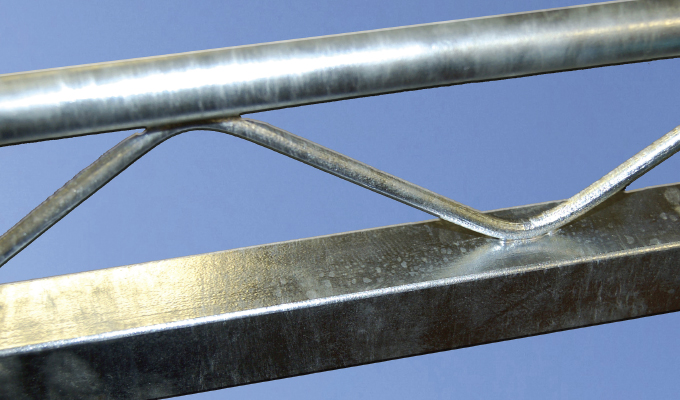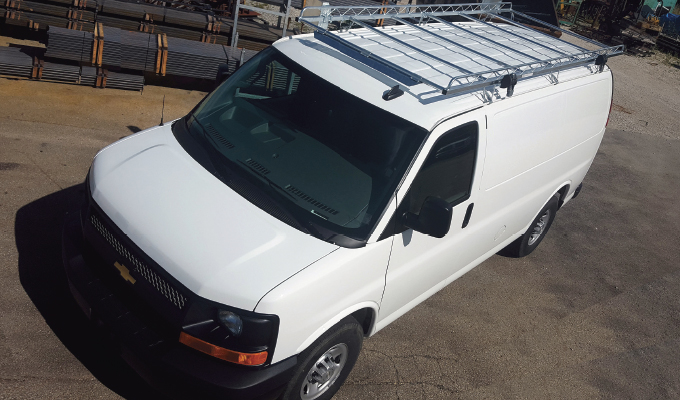As you pull up to any home improvement retail store, you can pan the parking lot and see multiple commercial work vehicles upfitted with roof racks. All through that parking lot are different types of vehicles: some with the same rack and some with different types of racks. Have you ever wondered what rack is right for your commercial upfit? Or what to consider when searching?
Let’s consider the categories of a rack when shopping. Categories can be broken down into the following: material, construction, weight capacity, accessibility, durability, price point, and maintenance. When doing one’s due diligence to find the right one, you would think all categories would be researched and checked off. However, in recent talks with a commercial vehicle upfitter, I was moved to discover that with the many options available to the end user, maintenance was hardly top of mind.
MAINTENANCE
Now, let’s talk maintenance. Maintenance is the state of being maintained. It is the process of preserving. Proper maintenance of any equipment will increase its optimal use time and increase its efficiency. By preserving a commercial roof rack, it will continually maintain its value and is a key component in the overall life span of the product. So, as many folks go out into their jobs as carpenters, plumbers, contractors, electricians, and more, their commercial vehicle and their cargo rack either is—or becomes—an extension of the office. Therefore, they all need to think about the maintenance of them.
ALUMINUM VS. STEEL
When choosing a cargo carrier for your commercial vehicle, what should it be made of? Commercial racks made of either aluminum or steel are found most on the market these days.
Aluminum is lighter weight, but steel is proven stronger and more durable. When considering a rack made of aluminum, do you know how strong you need it to be? While steel is prone to rust over time, aluminum does not contain iron, so it will not rust. However, it must be noted that aluminum does need to go through the process of anodizing if it is to be used outdoors. Aluminum is expensive and must be cleaned regularly to remove any buildup of dirt.
Steel racks are strong, durable, and reliable to the end user. While steel is prone to rust over time because its primary component is iron, most steel racks on the market combat this by additive methods that protect them from rust and environmental conditions. With additive protection the end user is allowed a stronger rack with a long life span.

ANODIZING ALUMINUM
Anodizing aluminum is coating the surface with a protective oxide layer by an electrolytic process in which the metal forms the anode.
Raw aluminum will not sustain a polished surface when exposed to outside environment. Oxides form on the surface, which will dull the finish. Maintenance in the habit of cleaning and polishing are required to sustain a luster on aluminum finishes.
Aluminum is anodized to increase corrosion resistance and improve adhesion. It does not increase strength because it is an insulative layer.
GALVANIZING STEEL
One impressive method for coating steel is galvanizing. Hot-dip galvanizing is the process of immersing fabricated steel or iron into a kettle of molten zinc. While immersed, iron in the steel reacts with the zinc to form a bonded alloy coating. There are major benefits to galvanized steel. Galvanizing steel racks is most often less expensive upon initial purchase than alternative protective coatings. Also, when galvanizing is deemed higher cost initially, the long-term life that galvanizing gives the steel outweighs the initial cost in durability.
Galvanized steel is very reliable, and its process has a predictable outcome. When choosing a galvanized steel rack, it offers a reasonable purchase price with little to no maintenance in the product’s lifetime.
HEAD TO HEAD
By anodizing an aluminum surface, end users can reduce corrosion, but the threat is not eliminated. Anodizing provides a thin protection in form of an aluminum oxide layer. This layer will deteriorate over time. Depending on the thickness and quality of the anodization layer, the surface protection could last 10 to 20 years.
Galvanized finish steel is a rust-free and abrasive-resistant finish to the metal. Galvanizing gives steel a life expectancy of 50-plus years and provides complete protection. This is because during the process, every part of the item is bonded by the zinc. With complete protection of the steel, the product can be scratched, dinged, or dented without the need of any maintenance or repair. The entire item is bonded by the zinc. The galvanized coating is the toughest coating to be applied to steel.
When the time comes to pick a roof rack, don’t forget to think about weight, maintenance, and longevity. If weight is a concern, aluminum is a great option, although it will require periodic maintenance. In applications where weight isn’t a concern, perhaps a more maintenance-friendly steel rack is the way to go.
About the Author
Jillian Burrow is the office and marketing manager at Topper Manufacturing. With her husband, Bruce Burrow Jr., the pair has been running Topper Manufacturing for 15 years and are the proud owners of Topper Manufacturing today. Jillian is the daughter of Ed Brown and the granddaughter of the late Robert E. Hedstrom. Ed and Robert are the engineers behind the design and development of the Topper Manufacturing All Steel Galvanized Rack. Jillian and Bruce spend most road trips looking out the window to see just how far from the Midwest that Topper Racks have traveled. Their favorite has been the southernmost point of the United States in Key West, Florida. Find out more, visit www.toppermfg.com.




